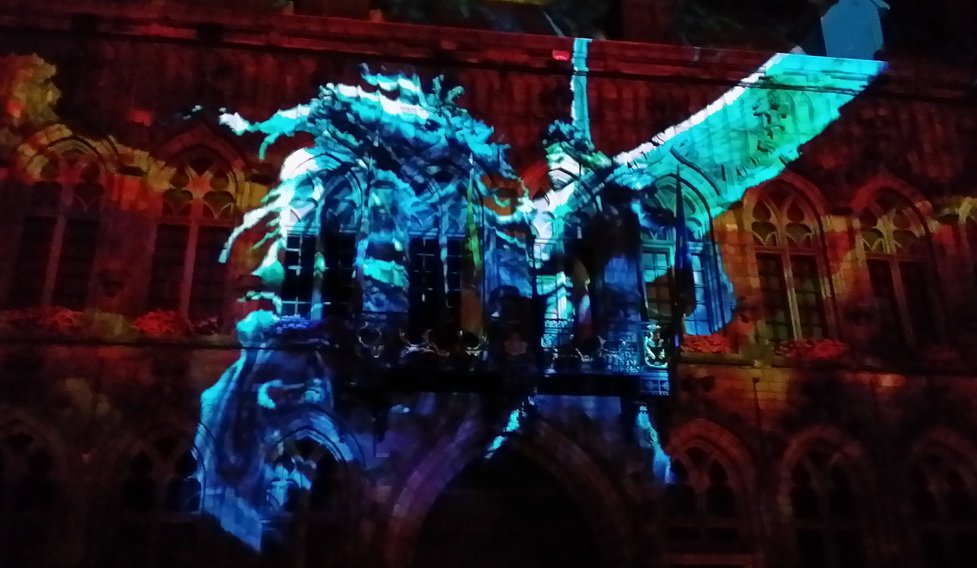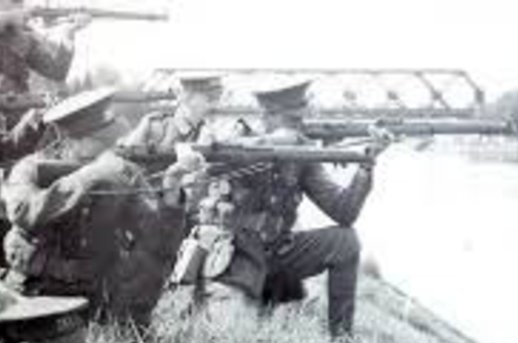
U wilt een rondleiding door de omgeving van Mons naar aanleiding van de gebeurtenissen in de Oorlog 1914-1918?
Op speciale aanvraag is dit mogelijk, doch, dit is de enige rondleiding zonder Grappen en Grollen. Bezoek aan Militaire bezienswaardigheden, Fields of Honour... Groepen zijn beperkt tot 4-6 mensen.
Ik heb deze pagina in het Engels gedaan uit respect voor de Engelstalige bezoekers uit landen waar het meerendeel van de gesneuvelde militairen vandaan kwamen
Uw persoonlijke begeleider in Mons staat voor U klaar, wij doen alles voor de lol, wij zijn "Grap en Grol"
De Website Voor Mons
"The Battle of Mons from eye witnesses" 1914
Een uitvoering zonder "Grap en Grol"
English;
We do understand that our English speaking visitors would like to know more. This is possible. You can contact us by e-mail at info@mons2016.com. Please be advised, if you want a "Official Tour" please contact the Mons Tourist Office. We are locals and take people on tour for a gift, a smile, a "Thank you". Of course we feel we do a better job, personal approach, well spoken English, we take our time and adapt to you.
Anything is possible according to your schedule, but please send an e-mail with you phone contact/number. We will do more in English, but again, we're just locals trying to show our beautiful city.
Americans, UK residents, Canadians, all is possible.
Deutsch;
Ich werde bald es auch auf Deutsch schreiben aus repekt fur die Deutsche Soladaten und ihren Gräber. Sie können mir immer contaktieren bei e-mail info@mons2016.com
The Battle of Mons from a Montois perspective…
August 23th 1914t
Fighting in Nimy takes place over several days and is concentrated along the original front line of the canal. The first fighting took place during skirmishes on August 21th when British squadrons advanced on Casteau on recognition missions, a memorial still reminds us today at the place the “First” contact was reported with the advancing German army.
It was during the day, on August 23th, that serious encounters between the two forces began. The fight at the Obourg train station was short but slowed down the German advances. A brave British soldier, on the roof of the station Obourg, allowed most of his comrades to retreat while he continued to fire at the enemy, but it is on Nimy, at the railroad bridge that the harshest fighting took place.
The German infantry advanced first thing in the morning at the railroad bridge. The other bridge, the road bridge, had already been put out of use by the defenders. A company of the 4th Royal Fusiliers and a machine gun, handled by Lieutenant Dease defended themselves. Heavy fire from British particularly powerful marksman, well trained Londoners mostly, caused the Germans huge losses. It might be thought that the initial encounet had a serious effect of the state of mind of the German forces, who came into battle as the outnumbering forces.
At Nimy bridge, Lieutenant Dease took control of his machinegun after the death or retirement of all the men of his section, despite his injuries he continued shooting and defending the bridge, the gate to Nimy, being the gate to the city of Mons. After being hit several times, it is finally retreated to the battalion clinic where passes away due to his heavy injuries. His remains are to be found at the cemetery of Saint Symphorien.
Private Godley Sydney takes the position of Dease. Hortky after he removes his gun from the stands and throws the pieces into the canal below. These two soldiers are the first soldiers of the First World War to be honoured by the Victoria Cross.
At 2:30 pm, under the weight of the German attack, the British realized that the positions have become impossible to hold. Many battalions defending suffered heavy losses, as well as injured as deaths. The decision is made to retreat to Mons. The German Amry has already started shelling the village of Nimy causing the destruction of a large part of the village and a part of it’s famous pottery works. Once in the village, the Germans burn several houses and some fighting occurred with the locals who suffered some losses.
Some citizens Nimy had already left to Mons to protect themselves from the heavy fighting and as the Germans forces drove some people out of their homes and started to use them as human shields. ( This is denied by German sources) many decided to follow the British in their retreat and come to the City of Mons where the British staff had already left and shelling began to be heavy. In many places of the city, shrapnel fals on roofs, yards, against the walls, chopping branches of the trees in the boulevards. The streets were deserted, but suddenly people ran from house to house: the Germans had arrived, they were in the vicinity of Mons (From the hand written memoires of Notary Hambye, eyewitness).
At the approach towards the Grand Place, following the Rue de Nimy, the Germans, knowing that they would receive sniper fire from British ambushed in the street, decided to continue their technique of using civilians as human shields(Again, denied through German sources). It is said that the German forces advanced in this matter but I will need to ask more(documented) information on this matter as this practise was not common in the early days of the war and the Old German officers, often from the Prussian elite would have never accepted it. Once on the Grand Place, the Germans capture the Mons Mayor Jean Lescarts and he is said to be forced to walk ahead of the platoon og Germans to free the passage.
At 4:10 p.m., the Germans encounter the British, in the Rue de Bertaimont. It is here that the British decide to defend and hold strong. During the shooting, the terrified civilians threw themselves to the ground, escaped by running, crawling, jumping walls separating gardens. All that is possible to seek shelter but the Germans, now among civilians, shot and killed five people and an other that was hit died at the hospice that day. On a personal note, it is remarkable how small the lasses were on the civilians taken into consideration the heavy fighting. Myself, not being British nor German, hear many a story about the “terrible” days in 1914, and indeed they were, however, the Urban Myths are Galore, especially about “Brave and Fearless” Politicians that saved the poor people from totals chaos. Well, has it ever been any different one can ask….
(From the hand written memoires of Notary Hambye, eyewitness).
“August 23rd 1914, the sun rises on a sad scared city. The fireing of cannons was heard around 10:00 a.m and it continued its terrible echoes into the night. Fierce fighting the whole day. The Germans suffered heavy losses and reach downtown in the afternoon and head to Jemappes and the Borinage(Westward move around Mons in pursuit of the BEF) where new confrontation awaits”
“Furious German troops that suffered heavy losses lost all sense of humanity and peaceful people, women, children, were put ahead of their troops to avoid the invaders to be attacked on their way through Nimy. They burned 76 houses and spread terror everywhere they passed. Eight men, three women and a young girl were killed on the road. Many were taken hostage and forced to walk before the troops on the advance to Mons. They were forced to stop down the street Nimy along the walls of the barracks ...”
“From our room, we're seeing the Rue du Parc and a group of 200 soldiers dressed in gray, wearing the spiked helmet and armed with rifles. They are nervous, watch windows and are ready to fire. They pass our house, I see cruelty in their faces and head to the pawnshop.(now rue du 11 Novembre, Mussee du Doudou) ...
“In town, Rue de Bertaimont, a few houses were burned down by the Germans. They make innocent Belgians responsible, blame them for the significant numbers of casualties they suffered from the heavy defence of the British Forces... The population is in fear, afraid of the time to come, being ruled under the of terror of the invader…..” (Notary Hambye)

However, the Battle of Mons is not yet finished, the British and the Germans are still fighting in the village of Hyon in Jemappes, Elouges, Dour, and throughout Borinage. At the Bascule, on the raod between Mons and Binche, a mile eastwards from the city center, British troops still showed their effectiveness. This entrenchment, with a handful of British soldiers, allowed a large part of the BEF to retreat, preventing the Germans from the enclosure of the Army. It was probably here that appeared the famous Angels of Mons.
The Battle of Mons remains etched in the memories as a tactical victory and remains "The beginning" of the First World War. The memory of the Battle of Mons still resonates every year during the commemorations both in Mons and the United Kingdom…
